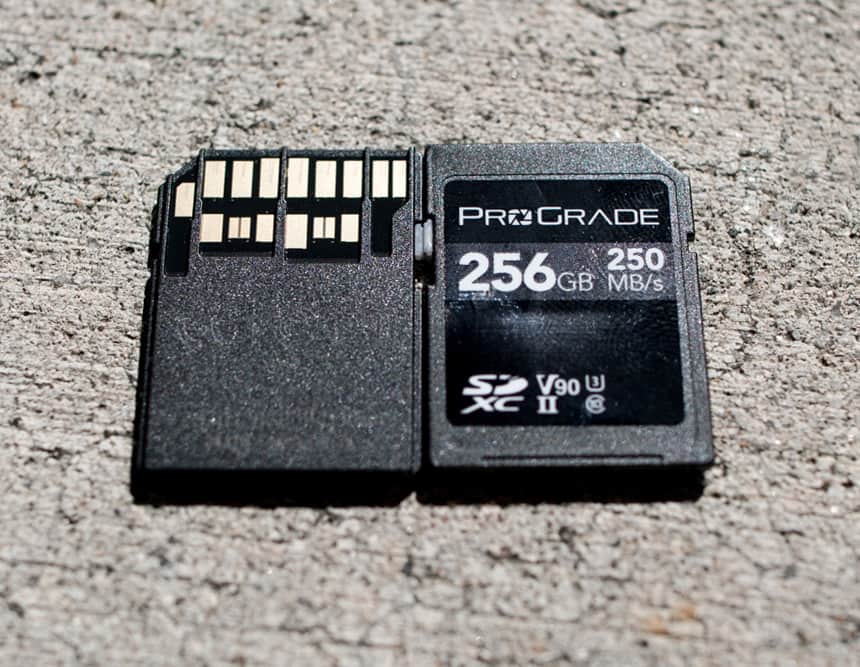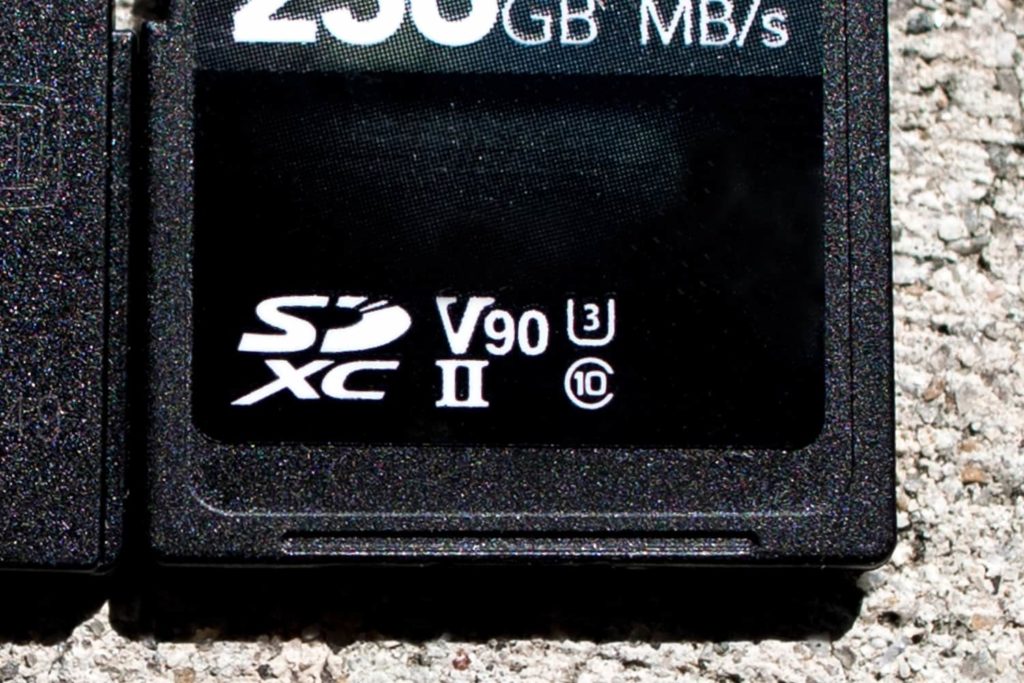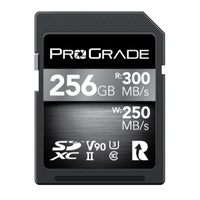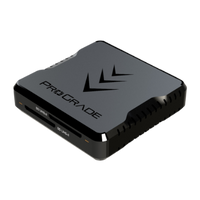
The Ultra High Speed (UHS) II interface has a second set of connectors.
Shared with permission from Michael Guncheon, editor, HD VideoPRO, as posted August 11, 2018
In part one of my examination of SD acronyms, I covered a little of the history of SD cards and how we progressed from SD to SDXC. But if you have a card that’s an SDXC UHS-II, U3, Class 10, V90, what do you really have? Let me break it down in order.
What is UHS?
UHS stands for Ultra High Speed. This is the specification that deals with how fast data can move in and out of the card via the communication bus. Note that this really is about the speed of the bus and not the speed of anything else in the card.
There are currently three bus speeds: UHS-I, UHS-II and UHS-III. With the introduction of UHS-II, the SD card added more pins to the connector. If you look at the connection pins of a UHS-II or UHS-III card, you’ll see two rows of pins. This is how they can get more speed on the bus.
As you might guess, the higher the number, the faster the bus speed. While there are changes in the connector due to the additional pins, there’s backward compatibility. If you have a UHS-I reader, it can accept a UHS-III card, you just won’t get UHS-III speed.
If you have a card that’s an SDXC UHS-II, U3, Class 10, V90, what do you really have?
The card description also mentions “U3,” which is a speed class that rates the overall write speed of the card.
Let me skip over U3 for a bit and look at the next description, Class 10. There are several ways of specifying speed in SD cards. The original ratings were simply based on megabytes per second (MB/s). Class 2, for example, meant that the card could write at 2 MB/s at a minimum. Class 10 on this card means that at a minimum it can achieve sustained writes at 10 MB/s. Class 10 is the highest C rating for SD cards. As I wrote in my review post on the ProGrade Digital card, it can write at a much faster rate, but Class 10 is the highest C rating for SD cards.
There are several ways of specifying speed in SD cards.
So now I can get back to U3. That’s the speed rating for those cards with high-speed busses. There are currently two levels: U1 and U3. U1 is similar to C10 in that the minimum performance is 10 MB/s. U3 indicates the minimum write speed is 30 MB/s.

A U3 rating for SDXC cards indicates a minimum write speed of 30MB/second.
The last description is the V rating. This is the video speed class, developed to address advancements in memory technology. The number in the spec is drawn from the minimum write speed. So, in this example, the V90 means the card can be written to at 90 MB/s. The range of video speed classes goes from V6 to V90.
So why all the different ratings? Why hasn’t V-rating, since it is the latest, just replaced all the others? That’s a very good question.
The answer is that the C10, U3 and V90 are more than just ratings. They really define different methods of accessing the memory on the card. Think of them as protocols. A card designed to V60 class protocol might only make it to U1 or C10.
A little confusing I know, but the reality is that most manufacturers specify a speed class for their device, and that’s really all you have to worry about.




